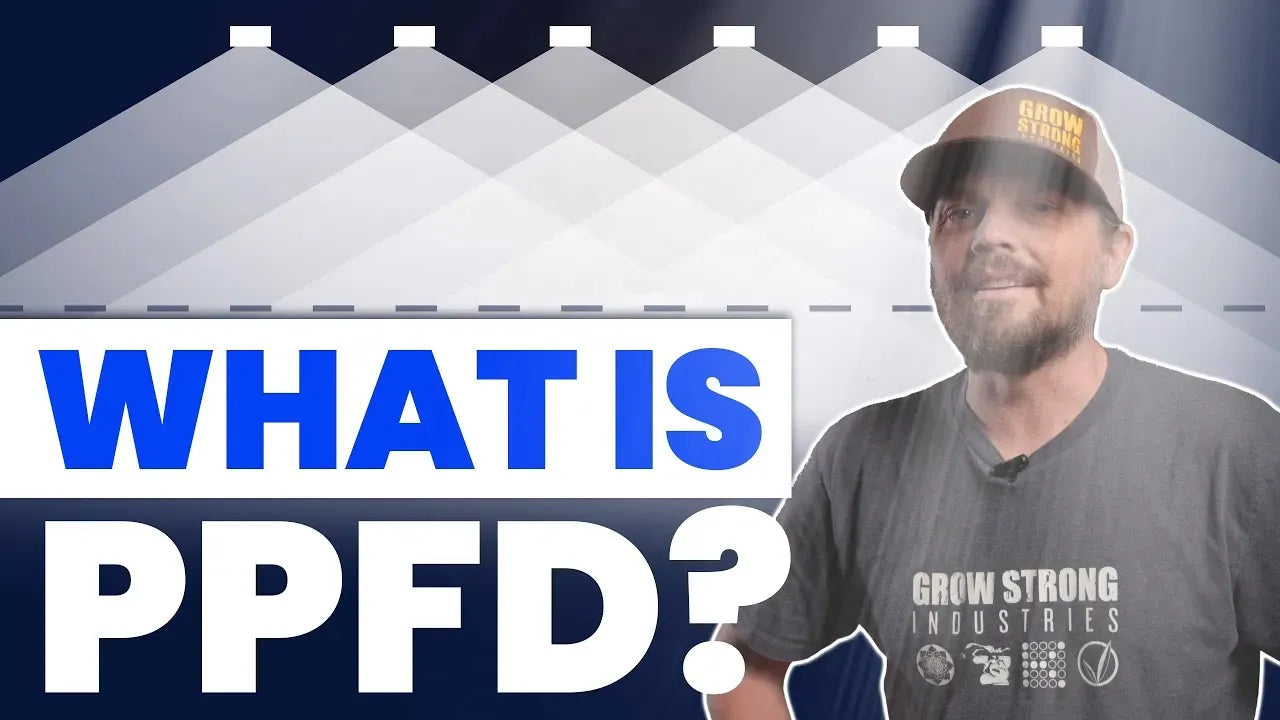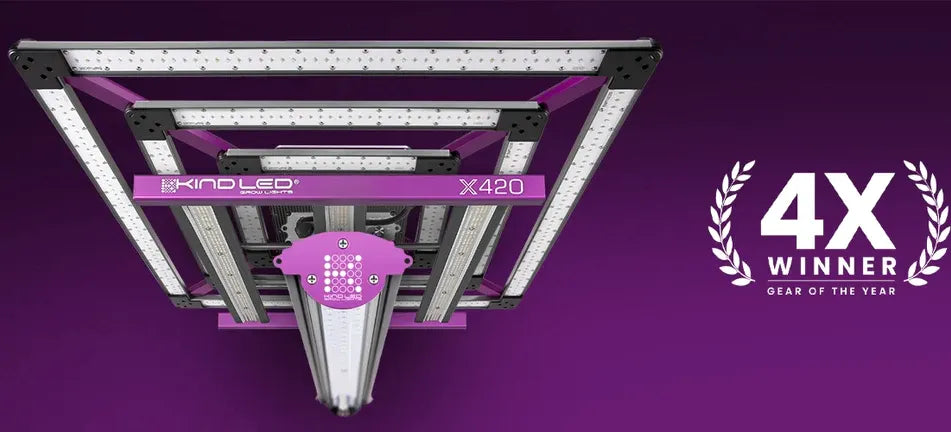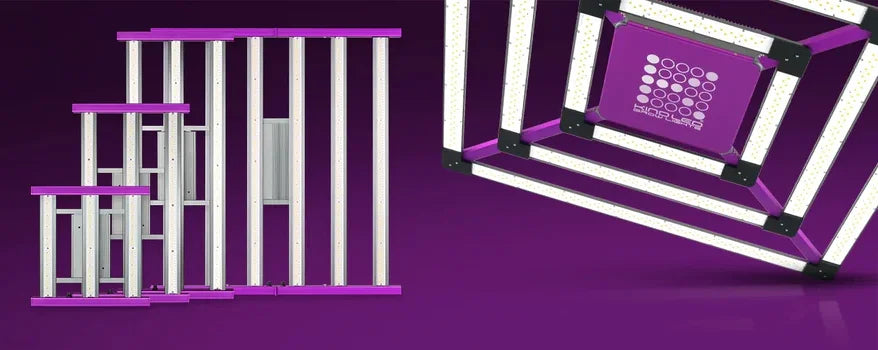
Understanding PPFD for Seedlings
Understanding PPFD for Seedlings: Optimizing Light for Healthy Growth
Introduction: Why PPFD Matters for Seedlings
One of the most critical factors for healthy plant growth is the amount of light your seedlings receive. Photosynthetic Photon Flux Density (PPFD) is a key measurement that helps you understand how much light is available to your seedlings for photosynthesis. Ensuring the correct PPFD levels for seedlings is essential for establishing strong, healthy plants. In this guide, we’ll explore what PPFD is, why it’s important, and how to optimize PPFD levels for your seedlings to promote optimal growth.
1. What Is PPFD?
PPFD (Photosynthetic Photon Flux Density) is a measurement of the number of photosynthetically active photons that reach a given area in one second, measured in micromoles per square meter per second (μmol/m²/s). Essentially, it tells you how much usable light is available for photosynthesis within a specific area, which is crucial for plant growth.
Unlike simply measuring light intensity, PPFD focuses on the amount of light that plants can actually use for photosynthesis, specifically in the 400-700 nanometer range, known as the Photosynthetically Active Radiation (PAR) range. This makes PPFD an essential metric when setting up grow lights for indoor plants, especially during the seedling stage.
2. Why PPFD Is Important for Seedlings
Seedlings are delicate and require the right balance of light to grow strong roots and stems. Too little light can result in weak, leggy seedlings that stretch toward the light source, while too much light can overwhelm them, leading to stress or even light burn. The correct PPFD ensures that your seedlings receive the perfect amount of light for healthy development without being overexposed or underexposed.
2.1 Promotes Healthy Growth
Providing the right PPFD during the seedling stage helps seedlings develop strong stems, roots, and leaves. Proper light exposure encourages robust growth and prevents issues like legginess or stunted development.
2.2 Supports Photosynthesis
Seedlings rely on photosynthesis to produce energy and grow. A sufficient PPFD ensures that your plants are receiving enough light for photosynthesis, allowing them to grow efficiently and effectively during this crucial early stage.
3. Ideal PPFD Range for Seedlings
The ideal PPFD for seedlings is typically lower than what mature plants require. Seedlings need less intense light because they are in their early growth phase and are more sensitive to light intensity. Here’s the recommended PPFD range for seedlings:
- PPFD for Seedlings: 100-300 μmol/m²/s
This lower PPFD range provides enough light for healthy growth without overwhelming the delicate seedlings. As the plants mature and transition into the vegetative stage, you can gradually increase the PPFD to support faster growth and development.
4. How to Measure and Adjust PPFD for Seedlings
To optimize the PPFD for seedlings in your grow space, you’ll need to measure the light output from your grow lights and adjust the distance between the lights and the plants accordingly. Here’s how to do it:
4.1 Use a PAR Meter
A PAR meter is a tool used to measure PPFD. By placing the sensor at the height of your seedlings, you can accurately measure how much usable light is reaching them. Based on the reading, you can adjust the light source to ensure the PPFD falls within the ideal range for seedlings.
4.2 Adjust Light Distance
The intensity of light decreases as you move farther away from the light source. If the PPFD is too high for your seedlings, move the lights farther away to reduce the intensity. Conversely, if the PPFD is too low, move the lights closer to the seedlings to increase the amount of light they receive. Always monitor your seedlings for signs of stress or light burn and make gradual adjustments as needed.
4.3 Use Dimmable Grow Lights
If your grow lights have dimmable settings, you can easily adjust the light intensity to match the ideal PPFD for seedlings. Lower the light intensity during the early seedling stage and increase it as your plants grow and enter the vegetative stage.
5. Choosing the Right Grow Light for Seedlings
Not all grow lights are created equal, and choosing the right one can make a big difference in providing the correct PPFD for your seedlings. Here’s what to look for when selecting a grow light:
5.1 Full Spectrum Light
Seedlings thrive under full-spectrum grow lights that mimic natural sunlight. Full-spectrum lights provide the necessary wavelengths for photosynthesis, including blue light, which is especially beneficial during the early growth stages. Look for grow lights that offer a balanced spectrum of light for optimal seedling growth.
5.2 Adjustable Settings
Grow lights with adjustable settings allow you to fine-tune the light intensity and coverage. Dimmable lights or lights with adjustable height options are ideal for seedlings, as they give you full control over the PPFD levels and ensure that your plants are getting just the right amount of light.
5.3 Energy Efficiency
Energy-efficient LED grow lights are a popular choice for indoor gardening. They provide excellent light output while consuming less energy and producing less heat, which helps maintain the optimal temperature for seedlings.
6. Signs Your Seedlings Are Getting the Right Amount of Light
It’s important to monitor your seedlings to ensure they’re receiving the correct amount of light. Here are some signs that indicate your seedlings are getting the right PPFD:
- Strong, Upright Stems: Healthy seedlings will have strong, sturdy stems that grow upright without stretching or becoming leggy.
- Bright Green Leaves: Seedlings should have bright, healthy green leaves. Pale or yellowing leaves can indicate light stress or nutrient deficiencies.
- Steady Growth: Seedlings that are receiving the correct PPFD will grow steadily and develop new leaves at a consistent rate.
Conclusion: Optimizing PPFD for Healthy Seedling Growth
Providing the correct PPFD for seedlings is crucial for promoting strong, healthy growth during the early stages of plant development. By ensuring that your seedlings receive the right amount of light, you’ll set the foundation for successful growth throughout their lifecycle. Use tools like PAR meters, adjustable grow lights, and careful observation to fine-tune the light conditions for your indoor garden and give your seedlings the best chance to thrive.
Frequently Asked Questions
- Can I use regular LED lights for seedlings? While regular LED lights may provide some light, they are not designed to deliver the full spectrum and intensity that plants need for optimal growth. It's best to use full-spectrum grow lights specifically designed for indoor gardening.
- How long should grow lights be on for seedlings? Seedlings generally need about 14-18 hours of light per day. Use a timer to automate the light schedule and ensure consistency.
- What happens if seedlings get too much light? Too much light can cause light stress or burn, leading to symptoms like yellowing leaves, scorched edges, or stunted growth. Monitor your seedlings and adjust the light distance or intensity if you notice signs of stress.


